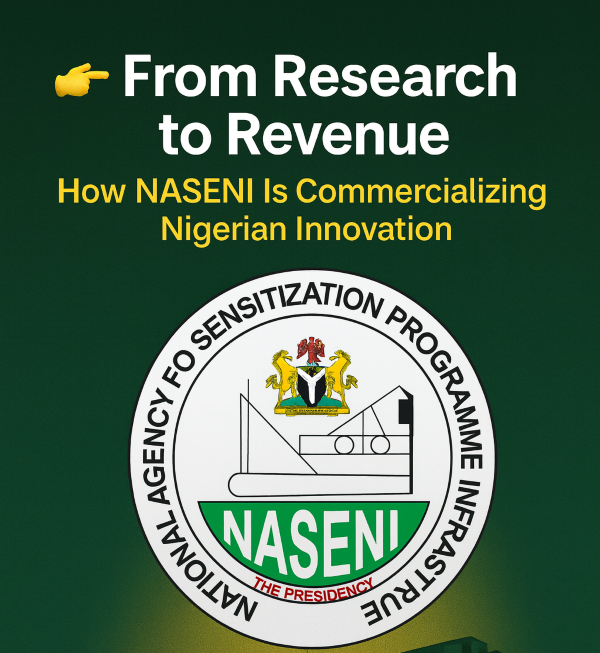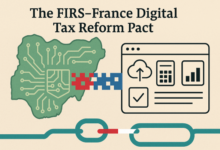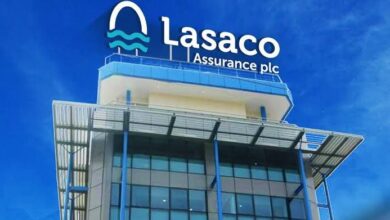Research Commercialisation: NASENI Charts New Path for Nigeria’s Economic Growth

The National Agency for Science and Engineering Infrastructure (NASENI) has reaffirmed that commercialising research outputs is central to Nigeria’s quest for sustainable economic growth, industrialisation, and job creation.
Speaking during the North-Central Sensitisation Programme on the NASENI Research Commercialisation Grant Programme (NRCGP) in Abuja, the agency’s Executive Vice Chairman and Chief Executive Officer, Mr. Khalil Suleiman Halilu, said Nigeria’s transition from a consumption-driven to a production-based economy depends on converting homegrown research into viable market solutions.
From Research to Revenue: The NASENI Vision
Halilu emphasised that research commercialisation bridges the gap between academia, industry, and the marketplace — ensuring that innovations developed in laboratories translate into real economic value.
Represented by Prof. Abdulmalik Ibrahim Onuwe, NASENI’s Director of Research, Halilu said the NRCGP was designed to fund viable, high-impact research and development (R&D) projects, in line with the agency’s broader mandate to promote indigenous technology and local content development.
“The NRCGP supports researchers and innovators who are building market-ready products that align with NASENI’s mission of technological self-reliance and national transformation,” Halilu noted.
He explained that the application process is fully digitalised, transparent, and efficient, eliminating bureaucracy and allowing for real-time evaluation. “This programme empowers researchers to transform their ideas into tangible outcomes that create wealth and solve Nigeria’s development challenges,” he added.
Addressing the Research–Industry Disconnect
One of the key challenges confronting Nigeria’s innovation ecosystem is the weak linkage between research institutions and industry players. Many promising innovations fail to reach the market due to lack of funding, commercial strategy, or intellectual property protection.
The NRCGP aims to change that by serving as a catalytic fund that enables innovators to cross the “valley of death” between invention and market adoption.
The programme brings together stakeholders from universities, polytechnics, research institutes, and industry — including the National Institute for Pharmaceutical Research and Development (NIPRD) and the National Space Research and Development Agency (NASRDA) — to strengthen collaboration and innovation pipelines.
The 3Cs Model: Creation, Collaboration, and Commercialisation
According to Engr. Dr. Anas Balarabe Yazid, Programme Coordinator and Special Adviser to the EVC on Science and Engineering Commercialisation, the NRCGP is guided by NASENI’s operational philosophy of the “3Cs” — Creation, Collaboration, and Commercialisation.
He explained that every project seeking NASENI funding must demonstrate market potential, scalability, and alignment with national priorities, including manufacturing, renewable energy, ICT, agriculture, and engineering infrastructure.
“Our evaluation framework ensures that only research with clear commercial value and measurable economic impact qualifies for funding,” Yazid stated.
This shift reflects NASENI’s determination to reposition Nigeria’s innovation sector from grant-driven research to enterprise-driven innovation — ensuring that public investments in R&D generate jobs, revenue, and technology transfer opportunities.
Building a New Innovation Culture
The sensitisation event brought together policymakers, researchers, and entrepreneurs across the North-Central region, providing a platform to discuss how science, engineering, and technology can drive economic resilience.
Ms. Joy Elugbe, Deputy Director of Planning and Policy Analysis, commended NASENI’s leadership for empowering Nigerian researchers with practical funding tools. She urged institutions to align their projects with the NRCGP framework to ensure broader national impact.
“Innovation is the currency of the future,” she said. “NASENI is building a system where Nigerian ideas can compete globally and contribute directly to GDP growth.”
BRANDECONOMY ANALYSIS: Research as an Industrial Strategy
NASENI’s approach signals a paradigm shift in Nigeria’s development model — from merely conducting research to converting knowledge into products, patents, and profit.
By promoting commercial viability as a prerequisite for funding, the agency is effectively merging science with enterprise — ensuring that innovation feeds directly into industrial policy, export diversification, and job creation.
For a nation striving to diversify from oil dependency, research commercialisation could become Nigeria’s next major growth engine — driving investments in technology, manufacturing, and small-scale industrial clusters across regions.
If effectively implemented, the NRCGP could turn Nigeria’s universities and research institutes into centres of economic productivity, not just academic excellence.
BRANDECONOMY TAKEAWAY
NASENI’s Research Commercialisation Grant Programme is more than a funding initiative — it is a strategic blueprint for transforming research into national prosperity.
By incentivising innovation that solves real problems, builds industries, and generates exports, NASENI is positioning Nigeria for a knowledge-based economic future powered by technology, entrepreneurship, and collaboration.
In the long run, research commercialisation will determine whether Nigeria becomes a true producer economy — or remains a market for other nations’ innovations.










